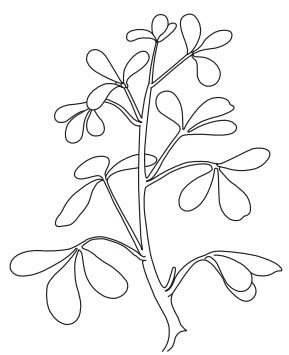Myrrh
| Home | | Pharmacognosy |Chapter: Pharmacognosy and Phytochemistry : Drugs Containing Resins
Myrrh is an oleo gum-resin obtained from the stem of Commiphora molmol Eng. or C. abyssinica or other species of Commiphora, belonging to family Burscraceae.
MYRRH
Synonyms
Gum-resin Myrrh; Gum Myrrh; Arabian or Somali Myrrh; Myrrha.
Biological Source
Myrrh is an oleo gum-resin obtained from the stem of Commiphora molmol Eng. or C. abyssinica or other species of Commiphora, belonging to family
Burscraceae.
Geographical Source
It grows in Arabian pennisula, Ethiopia, Nubia, and
Somal-iland.
Collection
Myrrh plants are small trees up to 10 meters in height. They
have the phloem parenchyma and closely associated ducts containing a yellowish
granular liquid. The tissues between these ducts often collapse, thereby
producing large cavities similarly filled, that is, schizogenous ducts become
lysigenous cavities. The gum-resin exudes spontaneously or by incising the
bark. The yellowish-white, viscous fluid is solidified readily to produce
reddish-brown masses which are collected by the natives.
Characteristics
Myrrh occurs as irregular masses or tears weighing up to 250
g. The outer surface is powdery and reddish-brown in colour. The drug breaks
and is powdered readily. Fractured surface is rich brown and oily. Odour is
aromatic and taste is aromatic, bitter, and acrid.

Chemical Constituents
Myrrh contains resin (25–40%), gum (57–61%), and volatile
oil (7–17%). Large portion of the resin is ether-soluble containing α-, β-, and γ-commiphoric acids, resenes, the esters of another resin
acid and two phenolic compounds. The volatile oil is a mixture of cuminic
aldehyde, eugenol, cresol, pinene, limonene, dipentene, and two
sesquiterpenes. The disagreeable odour of the oil is due to mainly the
disulphide. The gum contains proteins (18%) and carbohydrate (64%) which is a
mixture of galactose, arabinose, glucuronic acid, and an oxidase enzyme.
Chemical Tests
1. A yellow brown emulsion is produced
on trituration with water.
2. Ethereal solution of Myrrh turns red
on treatment with bromine vapours. The solution becomes purple with nitric
acid.
Uses
Myrrh is used as carminative and in incense and perfumes. It
has local stimulant and antiseptic properties and is utilized in tooth powder
and as mouth wash. Topically it is astringent to mucous membranes. It is used
in a tincture, paint, gargle and rinse due to its disinfecting, deodourizing,
and in inflammatory conditions of the mouth and throat. Alcoholic extracts are
used as fixatives in the perfumery industry.
Allied Drugs
Four different varieties of’ bdellium are present. Of these,
perfumed or scented bdellium or bissabol is obtained from C. erythaea var. glabrescens.
It resembles soft myrrh in appearance but more aromatic odour and does not give
a violet colour.
Marketed Products
It has been marketed as Guggulipid by CDRI, Lucknow, India.
In ayurveda, it is sold as Yograj guggulu (Baidyanath) for antiinflammatory and
antihyperlipidemic activity, and it is also a constituent of Madhumehari
(Baidyanath).
